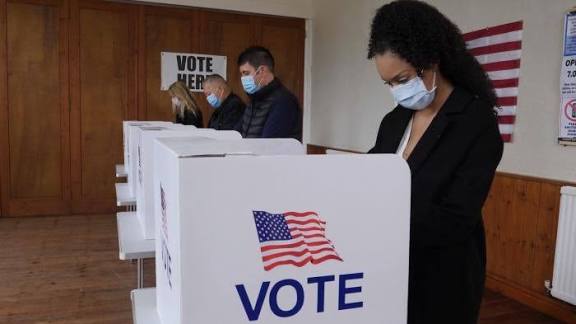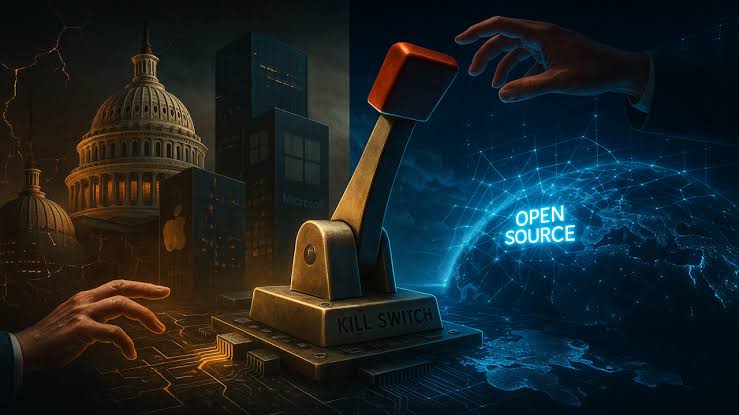Media in Frenzy: Viral Congressional Outburst Dominates National Headlines

Late financier and convicted sex offender Jeffrey Epstein discussed President Donald Trump in emails released by House oversight. Today we will discuss about Media in Frenzy: Viral Congressional Outburst Dominates National Headlines
Media in Frenzy: Viral Congressional Outburst Dominates National Headlines
In an age where any dramatic moment can be captured on camera and shared globally in seconds, one viral congressional outburst recently ignited a full-blown media frenzy—dominating national headlines, social media chatter, and political debate. The incident was not just a disruption in the hallowed halls of Congress; it became a symbol of growing polarization, media amplification, and public outrage. This article delves into the roots, reactions, and implications of that explosive moment.
The Outburst That Broke the Internet

On March 4, 2025, during a joint session of Congress, Democratic Representative Al Green of Texas interrupted the president’s address in a dramatic and highly visible way. With his cane raised and his voice booming, Green shouted, “You have no mandate to cut Medicaid!” His outburst came just minutes into the speech, as he challenged the president’s claim of political legitimacy and attacked proposed policy changes.
The House Speaker, Mike Johnson, attempted to restore order, banging his gavel and warning Green to take his seat. When Green continued, he was escorted out of the chamber by the Sergeant at Arms. The spectacle was captured on video, replayed endlessly across cable news, shared on social media, and quickly became the subject of intense commentary.
Why the Media Couldn’t Look Away
1. Raw Emotion Meets High Stakes
Green’s interruption was not a muted protest—he was visibly passionate, challenging not just policy but the legitimacy of political power. Such raw emotion, coupled with the context of a presidential address, made for a compelling media moment. It wasn’t just a heckle; it was a pointed, policy-driven confrontation.
2. A Symbol of Polarization
In many ways, Green’s outburst embodied the tension that defines modern American politics. The stark clash between his message (“no mandate”) and the speaker’s justification for sweeping changes captured the deep ideological divides. Media outlets seized on this as more than a moment of decorum being broken—it was framed as a microcosm of larger political and social divides.
3. Viral Amplification
The video of Green’s protest went viral almost immediately. Clips circulated on social media, turning what might have been a fleeting congressional scuffle into a national media event. Viewers replayed the moment, commentators parsed every gesture, and pundits debated its significance—and the frenzy fed itself.
4. Historical Echoes
Green’s behavior invoked memories of past congressional interruptions. For instance, in 2009, a congressman yelled during a presidential address, which drew widespread condemnation and became part of the lore of congressional drama. By drawing comparisons to such moments, media narratives placed Green’s outburst in a lineage of politically significant interruptions.
Political Reactions: Partisans Talk, Parties React
Republican Leaders
Speaker Mike Johnson expressed that he hoped the spectacle would not become a symbolic rallying point for Democrats. He warned that decorum on the House floor must be upheld, framing Green’s act as unbecoming of congressional procedure.
Democratic Support and Condemnation
Many Democrats defended Green’s outburst as a necessary act of conscience. Green himself later stated that he was “following the wishes of conscience” and welcomed any formal repercussions. Some in his party saw his action as emblematic of resistance to what they perceived as overreach, especially on healthcare. Others were more cautious—concerned that such dramatics could backfire, making the party look unprofessional or unruly.
Formal Consequences
The House took disciplinary action. A formal resolution to censure Green was put forward. Censure, a rare but serious reprimand, is a way for Congress to publicly condemn misconduct without removing a member from office. This underlined how seriously colleagues treated the breach of norms: not just a theatrical moment, but a congressional crisis of decorum.
Media Coverage: Framing, Bias, and Echo Chambers
Feeding Frenzy or Responsible Reporting?
Journalists and media critics have long warned about “media feeding frenzies”—moments when coverage intensifies dramatically, fueled more by spectacle than substance. Green’s outburst became exactly that. News outlets spotlighted every angle: the policy implications, the personal drama, the emotional stakes. But some argued that the relentless coverage risked reducing political discourse to shouting matches and sensationalism.
Polarized Narratives
How the media covered Green’s interruption often tracked political leanings:
Conservative outlets emphasized decorum and argued that Green’s actions were disrespectful and counterproductive.
Progressive voices focused on the substance of his critique—Medicaid cuts, social justice, resistance—framing the outburst as a courageous political statement.
Mainstream media largely played both sides, replaying the video repeatedly, bringing in commentators from across the spectrum, and treating the event as both a political controversy and a media spectacle.
Social Media Echo Chamber
On social platforms, the moment exploded. Clips of Green’s shouting circulated with commentary, memes, and reinterpretations. For some, his words became a rallying cry; for others, a meme. The speed and intensity of the spread exemplified how congressional drama now lives equally on the floor of power and in the digital agora.
Public Reaction: More Than Just Watching
Green’s dramatic protest spurred a torrent of public reaction. Some voters praised him for speaking boldly, believing his act highlighted genuine grievances around healthcare and governance. Others criticized him for undermining the dignity of the institution. In many ways, his outburst became a Rorschach test for Americans’ political frustrations.
The moment also revived discussions about the role of protest inside formal political spaces. Can such outbursts change policy, or do they merely provide media fodder? Do they help constituents feel heard, or do they further erode trust in institutions?
Historical Context: Outbursts Aren’t New — But Their Impact Has Changed
Political theatrics in Congress have a long history. Past incidents, such as shouting during presidential addresses or dramatic protests during Supreme Court confirmations, drew widespread attention. Even moments from the early 2000s, like Howard Dean’s infamous “scream,” were amplified heavily by media, shaping public perception. What distinguishes today’s incidents is not just the drama, but how they’re magnified by social media, replayed across platforms, and embedded into partisan storytelling.
The Broader Implications
1. Erosion of Decorum—or Evolution of Protest?
Some political analysts see Green’s act as another sign that traditional norms of congressional behavior are declining. Others argue it’s a kind of protest adapted to the modern political moment—a symbolic act meant to be seen, heard, and felt by millions rather than strictly adhering to procedural norms.
2. Media as Co‑Producer of Political Theater
The outburst reveals how media doesn’t just report political theater—it helps produce it. Politicians know that dramatic moments will be replayed, shared, and scrutinized. In that sense, Green’s protest might have been designed not just for his fellow legislators, but for the audience beyond the chamber.
3. Risk of Substance Being Overshadowed
While the media spotlight can amplify a message, there is a risk that the policy critique itself gets lost in the spectacle. What started as a protest against Medicaid cuts may morph in the public mind into a meme or a moment of decorum breakdown, diluting its substance.
4. Changing Nature of Accountability
In a media-saturated age, political accountability doesn’t just happen through formal processes—it also plays out in the court of public opinion. Viral moments can shape reputations, influence fundraising, and drive narratives in a way that was impossible in earlier eras.
Lessons and Reflections
For Politicians: Drama can be a double-edged sword. While it draws attention, the long-term benefits of a viral moment depend on how well it ties back to substance and policy.
For Media: There’s a fine line between covering a dramatic event and feeding a spectacle. Responsible journalism requires balancing the emotional pull with deeper analysis.
For Citizens: Viral congressional moments remind us that representation and protest are evolving. But they also underscore the importance of looking beyond the headlines to the policy issues at stake.
For Democracy: The event is both a symptom and a signal—of polarization, of media-driven politics, and of a changing relationship between elected officials and the public.
Conclusion
The viral congressional outburst by Rep. Al Green was more than just a momentary disruption in the House chamber. It was a high-stakes performance, a political declaration, and a media event all rolled into one. The frenzy that followed—from news networks to social media threads—underlines how modern politics is as much about spectacle as substance. As viewers and citizens, we must ask: when the cameras are rolling and the headlines are flashing, are we witnessing meaningful protest—or just another fleeting viral moment?
How useful was this post?
Click on a star to rate it!
Average rating 0 / 5. Vote count: 0
No votes so far! Be the first to rate this post.
About the Author
usa5911.com
Administrator
Hi, I’m Gurdeep Singh, a professional content writer from India with over 3 years of experience in the field. I specialize in covering U.S. politics, delivering timely and engaging content tailored specifically for an American audience. Along with my dedicated team, we track and report on all the latest political trends, news, and in-depth analysis shaping the United States today. Our goal is to provide clear, factual, and compelling content that keeps readers informed and engaged with the ever-changing political landscape.




